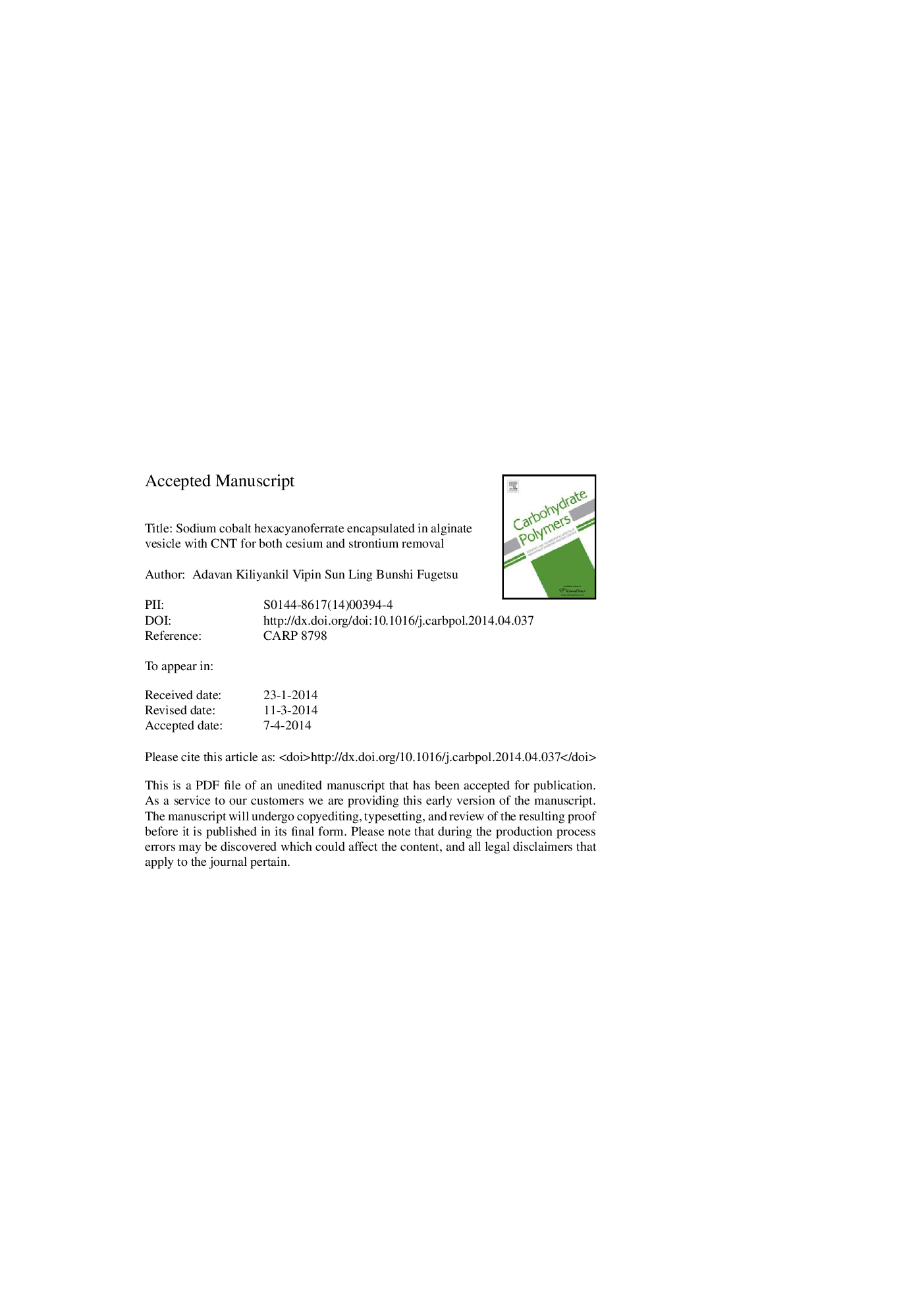| Article ID | Journal | Published Year | Pages | File Type |
|---|---|---|---|---|
| 7791649 | Carbohydrate Polymers | 2014 | 32 Pages |
Abstract
Sodium cobalt hexacyanoferrate (CoFC)-encapsulating alginate beads reinforced with highly dispersed multiwalled carbon nanotubes were prepared for the aqueous removal of cesium and strontium ions. Carbon nanotubes enhanced the effective surface area, encapsulation ability and adsorption capacity of beads. Equilibrium and kinetic studies were conducted with different mathematical models. The goodness of mathematical fitting of experimental data on the adsorption isotherm model was in the order Langmuir higher than Freundlich. The maximum Cs+/Sr2+ adsorption capacity of beads modified with carbon nanotubes were 133/72Â mg/g and that of beads without carbon nanotubes were 121/70Â mg/g. Similarly in kinetic models pseudo-second-order gave better fitting than pseudo-first-order. The performance of beads was consistent in a wide range of pH as well as in high ionic competitions. The fixed bed adsorption column analysis indicated that beads can be used for large scale treatment of cesium and strontium contaminated water.
Related Topics
Physical Sciences and Engineering
Chemistry
Organic Chemistry
Authors
Adavan Kiliyankil Vipin, Sun Ling, Bunshi Fugetsu,
